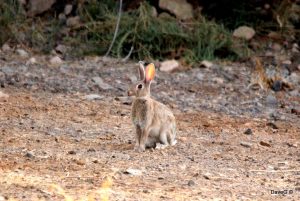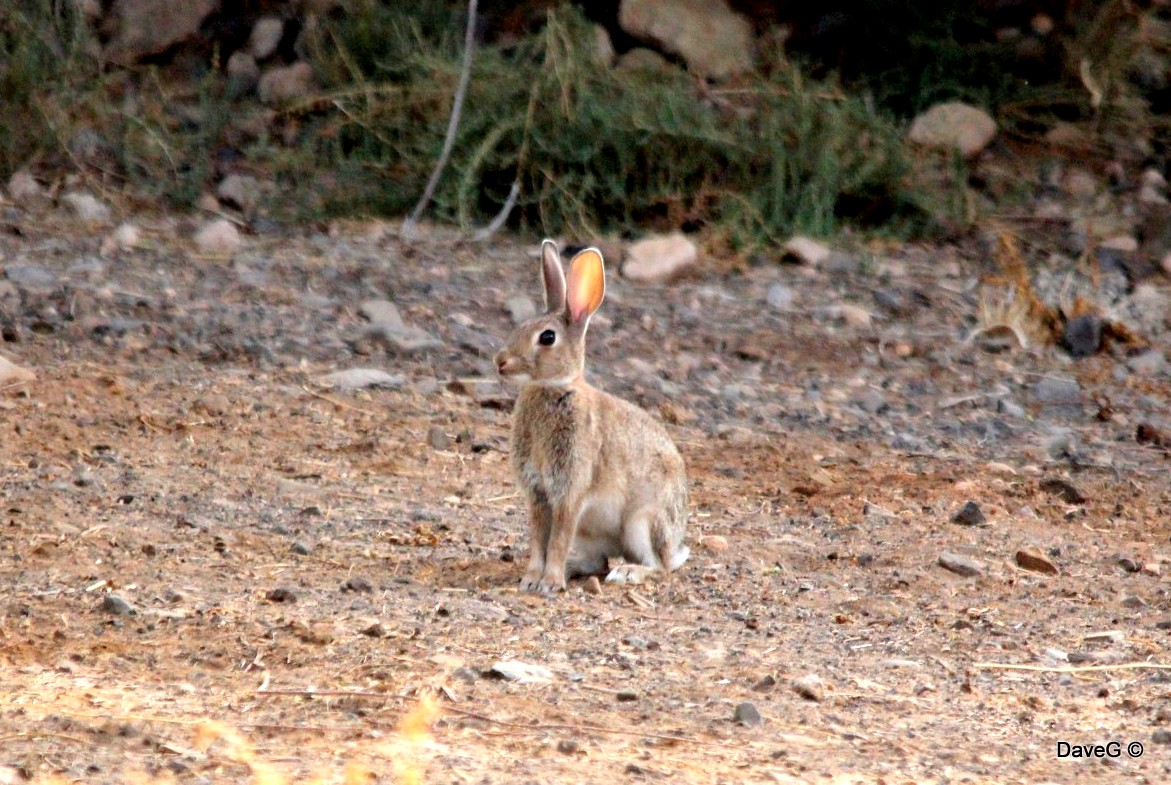The European Rabbit
“Oryctolagus cuniculus”

An Article by DaveG for The Voice Fuerteventura

Here in Fuerteventura, we have our fair share of rabbits and this one can be seen all around the island.
This mammal is well known all over the world. A highly successful species which has been introduced by humans for a wide variety of reasons. But how did they get to the Canary Islands? One theory is that they were left behind as a food supply for returning ocean-faring travellers.
CULTURE & FOLKLORE
Rabbits are born blind and furless and need a lot of attention when young. They live in small communities from around 2 to 10 rabbits in burrows, called warrens, often located on slopes or underground. An expectant mother will build and line a new warren with grass or fur, near to the social group a short while before giving birth. Gestation is about 30 days and usually results in between 3 and 7 kittens.
Rabbits are used for food, clothing and pets, and are often hunted or farmed. They were a staple part of the diet for the original settlers on the island and even today they are hunted here in Fuerteventura and served in many of the local dishes.
They are also prey for many wild birds and animals. Humans have given rabbits a friendly personality, resulting in many books and movies depicting them as cute and cuddly. There are many theories relating to their association with Easter and some say it could be linked to fertility along with the Easter egg. Either way the Easter bunny is well established in our culture and folklore.
WHERE TO FIND THEM
The introduction of rabbits, in some cases, had devastating results for the local environment. Of course we all remember myxomatosis; a virus which spread among rabbits and is still present in the population today. This disease led to a vast reduction in human consumption of rabbit. However, here in Fuerteventura rabbits are wide-spread and are hunted during the hunting season with guns and dogs called 'podencos'.
The question of hunting rabbits today is highly disputed as some regard the way in which the rabbits and dogs are treated by some, as cruel. Whereas others see it as a local tradition and believe they have a right to preserve it. Whatever your view, rabbit is a part of the staple diet here and many local dishes of the Canary Islands feature rabbit as the main ingredient. You will see it on menus as 'Conejo' and a particular popular one is called 'Conejo en Salmorejo' or rabbit in Salmorejo sauce.

